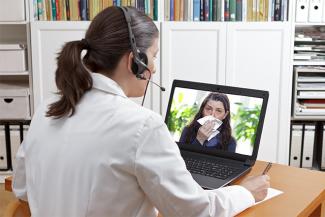
As the best alternative for face-to-face meetings, since the lockdown began in March 2020, more and more doctors are flocking towards teleconsults via video and telephonic calls. While the guidelines for Telemedicine came in a little later*, much was left to the individual’s discretion on how to conduct these consults, leaving many doctors and patients unhappy and unsatisfied.
We spoke to several patients and doctors before putting together the essential crux of what both sides of the call want delivered.
The major benefits of Telemedicine are clear. A few are listed below:
- Faster healthcare delivery, no waiting time
- Money and time saved on travel
- No waiting room discomfort, better experience
- Convenience of home consult
- Access to coveted doctors from distant parts of the country and even world
What patients expect?
- Good amount of time with their doctor. Patients are looking for more than a hasty 10-minute chat with the doctor, which is often the case in busy OPDs. With the recent pandemic, there are several issues that need to be addressed for patients regarding continuing healthcare such as prescription refills, added immunity care, safety precautions etc. For many, consults were a way to connect and talk to a healthcare professional who cared and could provide the right advice. A doctor could do all of his only with sufficient time with each patient. Most teleconsults were anywhere from 20-40 minutes, this does not include psychiatric consults which often go over an hour.
- Attention to mental health concerns of the patient, especially to check on the psychosocial effects of the lockdown. Even if there is no past history of mental health, due to the special circumstances we are all in currently, it is only prudent for the doctor to check on any such concerns. A quick assessment can be done by asking a few questions about the patient’s mood, well-being and living situation.
- Chat with the family member or the primary healthcare provider who is responsible for all aspects of daily care.
- Advice on whether a patient needs to be taken to the hospital or can be managed at home i.e tele-triage. This was most helpful as patients are often unsure if they have done the right thing/s.
- Online prescription eases the need for refills for patients with chronic conditions. However, doctors were not so willing to write out prescriptions for new medications or switching patients to new drugs. Patients were also unable to see the report of their consult.
- Money’s worth consult. Most patients feel that a follow-up consult is rather quick and not worth the consultation fee. An expected amount of time is anticipated by the patient that goes beyond a quick “Any complaints ? If none, let’s continue your meds and follow-up in 3 months”.
- No interruptions during consult with patients, nurses or medical staff walking in. This not only ensures focus on the patient but also complete confidentiality. Patients tend to clam up when there are too many distractions or people in the room. Invariably there are medical students or research assistants in the consult room along with the doctor taking notes, which makes the patient uncomfortable.
- Doctors were unwilling to take on new patients. Most were happy to continue with their old patients but did not take on new referrals.
- Due to the lack of any standard practices or guidelines, many patients felt short-changed when they did not receive satisfactory consults.
What doctors want?
- Effective use of their time. Most doctors who are not going to their respective hospitals or clinics find that the time saved in travel alone can be spent wisely on scheduling more teleconsults.
- Efficient patient consults. Doctors find they can do a more comprehensive consult with the patient and provide a holistic treatment plan. Doctors have the power to do more and insert integrative care approaches for better outcomes.
- Access to a patient’s file was an obstacle as these are not electronic files. Doctors had to depend on the patient’s own verbal record or technology skill to send pictures of the file and laboratory reports. Proactive patients or careproviders could ease this.
- Triaging via telemedicine was very important and saved un-necessary hospital/ER visits. Reversely, doctors were able to convince patients who needed to seek emergency medical care but were afraid of going to hospitals due to the COVID pandemic.
- No distractions with medical staff walking in and out of their consulting rooms or interrupting with other concerns. It allowed full focus on the patient in front of the screen.
- Doctors were for the first time able to see the living conditions of the patient in the background which provided an understanding of factors that may affect the patient’s overall well-being.
- The doctor was able to interact with not just the primary care-provider but other members of the family who are also involved in decision-making and patient care. Typically, the children who are working may not be able to come for the doctor’s meetings. The household help who is the primary helper can be spoken to inorder to clarify any incidences.
- Medicolegal issues are and continue to be a major hindrance for doctors to embark on telemedicine. Unfortunately, many of these issues were not spelled out in the Guidelines issues by the government further making it unfriendly. This was especially difficult for doctors who did not use any telemedicine support service but were teleconsulting independently. The other concern was making a diagnosis without conducting a physical examination, which naturally put a lot of fear in the doctors’ minds. No one wanted to be held accountable for any such medical misconduct. This was also a major reason that new patients were not taken on.
*The Indian Government published the Telemedicine Practice Guidelines on March 25, 2020. Click here to read more https://www.patientsengage.com/news-and-views/telemedicine-india-guide-families
Changed
04/Sep/2020
Community






